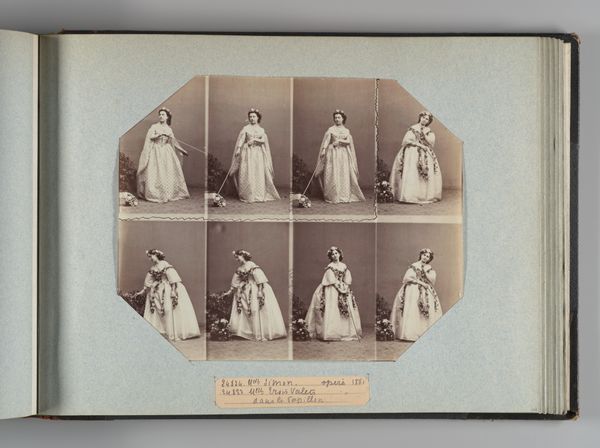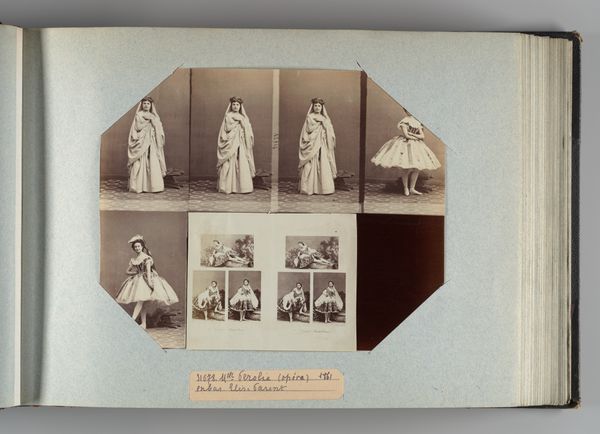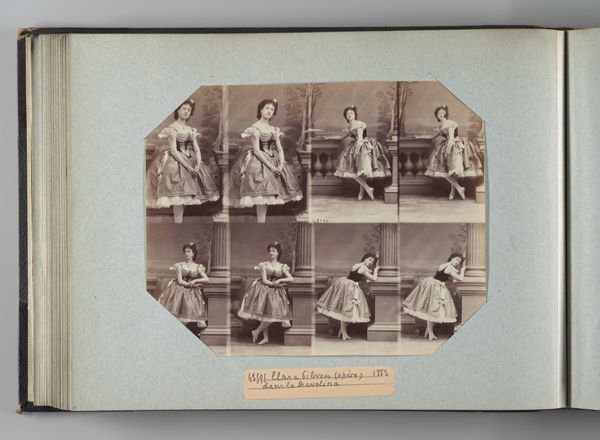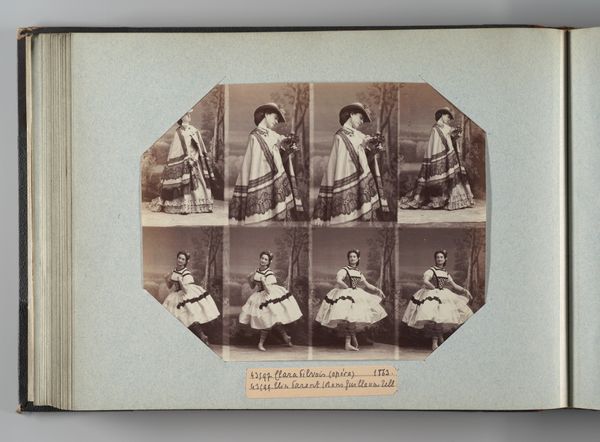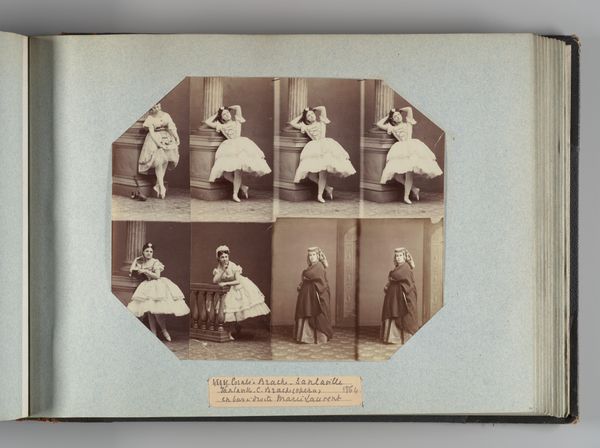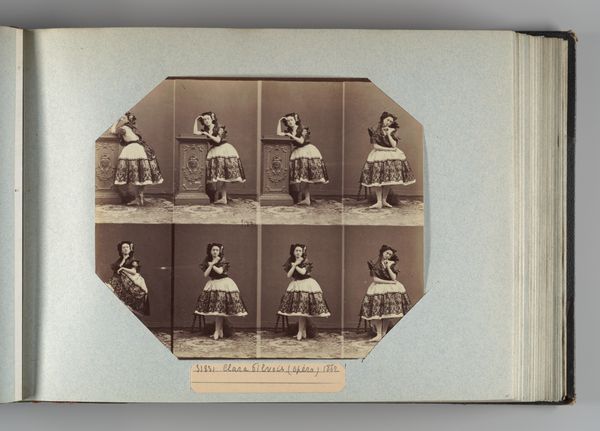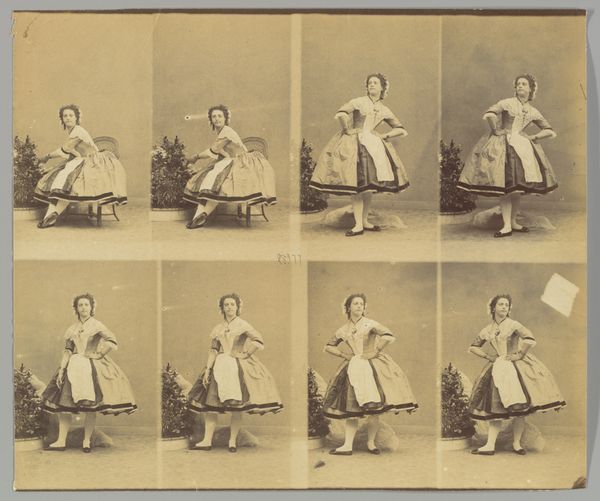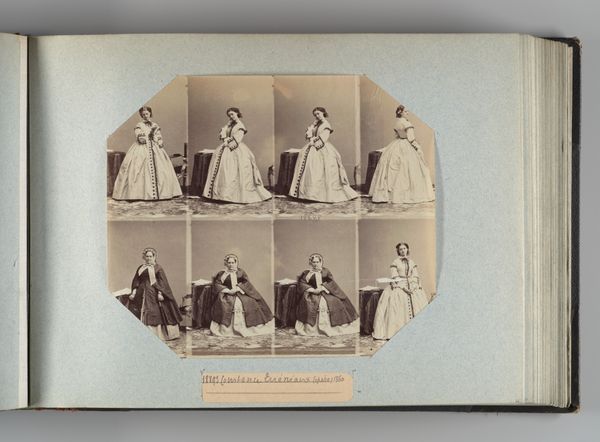
photography, albumen-print
#
portrait
#
photography
#
orientalism
#
history-painting
#
academic-art
#
albumen-print
Dimensions: Image: 7 3/8 × 7 1/16 in. (18.8 × 18 cm) Sheet: 10 3/8 × 13 3/4 in. (26.3 × 35 cm)
Copyright: Public Domain
Curator: This albumen print from 1865 by André-Adolphe-Eugène Disdéri is titled "Mlle Sanlaville dans l'Africaine". It resides here at the Metropolitan Museum of Art. Editor: My immediate response is one of unease. The sepia tones combined with the staged, almost sterile setting, evoke a sense of discomfort despite the ostensibly elegant subject. It feels very clinical. Curator: Well, consider the historical context. Disdéri was a pioneer in carte-de-visite photography, and this portrait format gained immense popularity. It allowed for mass production and circulation of images, impacting how individuals were represented and consumed. Think about it: theatre and opera stars suddenly within easy reach of a growing middle class. Editor: I see what you mean. The figure, presumably Mademoiselle Sanlaville, adopts two poses repeated three times, evoking sequential photography; an attempt at cinematic precursory effect. What strikes me as symbolic is the theatrical nature, contrasting the “African” context, that is in name alone – appropriating its image to solidify a Western sense of identity. The blanket she is draped with has me intrigued... Curator: Absolutely, it begs a question of ownership. It is quite illustrative of how, at this time, "Orientalism" functioned within broader power structures. How might Sanlaville's representation in 'L'Africaine,' an opera notorious for its problematic portrayal of race and colonialism, contribute to those structures? It's more than stage design. Editor: You’re right, it does feel embedded. I wonder too about her physical composure, especially with such prominent hand placement: what emotional vocabulary can we deduce? Is it boredom, defiance, or something far more muted like submission and a lack of choice? Curator: That tension is key to understanding the photograph. Sanlaville is not just an individual; she becomes a symbol of complex dynamics, touching race, class, and gender within the cultural landscape of 19th-century France. Editor: Precisely! Now when I reflect on my initial reaction, I have a renewed awareness. What once felt unsettling due to the photograph’s strange artifice can be reframed to more serious notions on display, far beyond what I had considered on its face. Curator: Agreed. It serves as a stark reminder of the importance of analyzing how visual representations perpetuate historical power imbalances and how the simplest imagery can contain multitudes of symbolic tension.
Comments
No comments
Be the first to comment and join the conversation on the ultimate creative platform.

